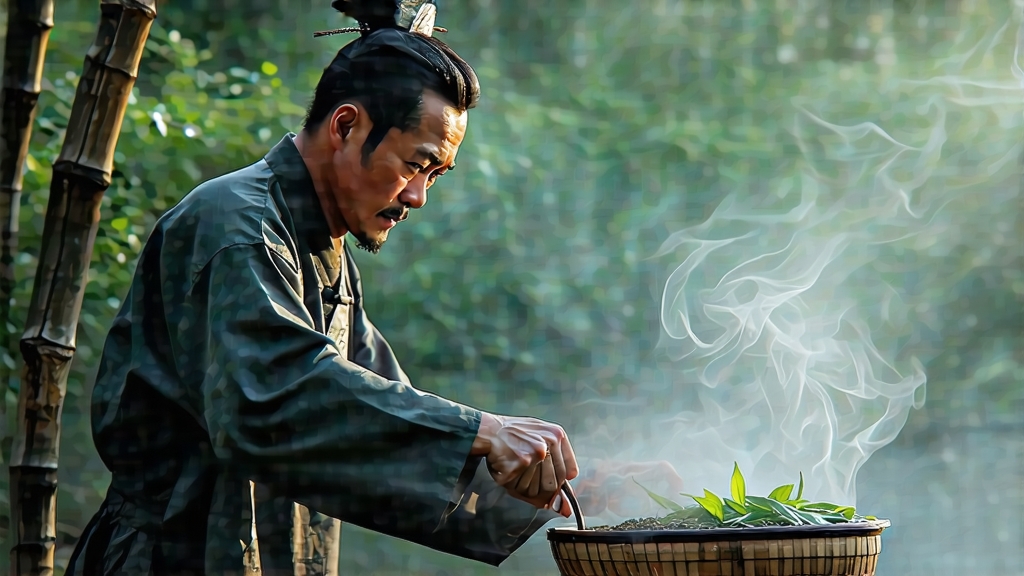
Longjing—romanised as Lung-ching or, more poetically, “Dragon-Well”—is not merely a green tea; it is a liquid manuscript of Chinese history, geography and aesthetics. To the uninitiated it may look like any other flat, jade-coloured leaf, yet in the cup it releases the scent of early spring rain on limestone, the sweetness of baby corn and the faint suggestion of toasted hazelnuts. Its birthplace, a crescent of hills cupping the western edge of Hangzhou’s West Lake, has been declared a UNESCO World Heritage site not for temples or pagodas, but for these terraces of tea. The Chinese say “one mountain, one valley, one taste”; Longjing is the valley’s autobiography written in chlorophyll.
Historical scrolls trace the name to a Tang-dynasty well located at the foot of Shi Feng (Lion Peak) mountain. The well’s water was so exceptionally dense that, when stirred, the surface curved like a dragon’s spine, hence “Dragon-Well”. By the Song dynasty the monks of nearby Yongfu Temple were already pan-drying leaves picked from wild tea trees, but the tea did not ascend to imperial status until the Kangxi Emperor (r. 1661-1722) visited Hangzhou incognito. Legend claims that after tasting the infusion he immediately conferred gong cha (“tribute tea”) status upon eighteen bushes still growing today in front of the Hugong Temple. Those bushes are now cordoned off like crown jewels; every April their entire yield—barely 200 g—is auctioned for prices exceeding the cost of gold by weight. Such mythology fuels both reverence and forgery: more “West Lake Longjing” is sold in Beijing each spring than the genuine lake-side gardens could produce in a decade.
Authentic Longjing is micro-regional. The Chinese government recognises five core sub-zones totaling barely 1,680 hectares: Shi Feng, Mei Jia Wu, Weng Jia Shan, Tiger-Running (Hupao) and Yunqi. Among connoisseurs Shi Feng is the Château Lafite of the genre; its leaves acquire a natural stone-fruit sweetness from quartz-rich soil and the morning mist that rises off the lake. Mei Jia Wu, a gentler amphitheatre of loam and bamboo, yields a creamier liquor favoured by diplomats since Premier Zhou Enlai served it to Nixon in 1972. Leaves grown outside these micro-zones—even if the same cultivar and identically processed—may legally be sold only as “Zhejiang Longjing”, a distinction akin to “Burgundy” versus “Bourgogne Grand Cru”.
The cultivars themselves matter. The heirloom shrub is Qunti Zhong (“group-type seed stock”), a sexually propagated population of ancient trees whose leaves are small, pale and slow to bud, concentrating savoury amino acids. In the 1980s researchers released Longjing #43, a clonal selection that sprouts seven to ten days earlier, yields a more uniform emerald colour and tolerates mechanised harvesting. Purists detect a thinner finish in #43, but its reliability has made it the work-horse of modern commerce. A third cultivar, Zhong Cha 102, trades some fragrance for frost resistance and is planted mainly on higher, cooler slopes. When buying, check the plucking date: anything harvested before Qingming Festival (around 4 April) commands the highest premium because the leaves have never known insect pressure and their theanine-to-catechin ratio is still perfectly poised.
Craft is where leaf becomes legend. Unlike Japanese greens that are steamed, Longjing is wok-fired, a technique Chinese call “killing green” (shaqing). The master begins by heating a bare iron pan to 280 °C, testing the surface with a splash of water; if the droplets skitter like mercury, the temperature is right. He then tosses in 250 g of just-withered leaves and, within 90 seconds, drops the heat to 80 °C. For the next twenty minutes his hands—calloused to asbestos toughness—pat, press, roll and swipe the leaves against the metal, coaxing them into the characteristic flat sword shape while locking in jade colour. The motion is choreographed: ten presses followed by three sweeps, repeated hundreds of times. One lapse of attention and the leaf blisters, turning bitter and ochre. The most celebrated artisans can finish 1 kg of finished tea per hour; a novice ruins half that weight.
After pan